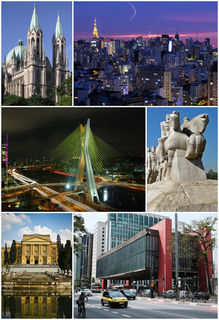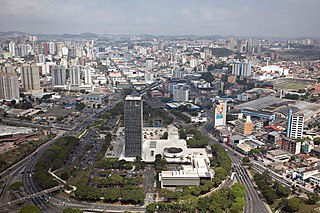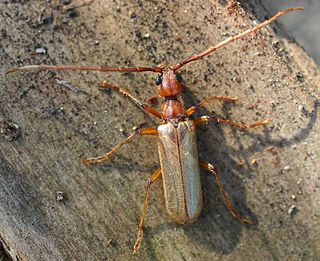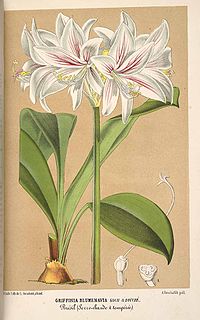
São Paulo is one of the 26 states of the Federative Republic of Brazil and is named after Saint Paul of Tarsus. As the richest Brazilian state and a major industrial complex, often dubbed the "locomotive of Brazil", the state is responsible for 33.9% of the Brazilian GDP. São Paulo also has the second highest Human Development Index (HDI) and GDP per capita, the fourth lowest infant mortality rate, the third highest life expectancy, and the third lowest rate of illiteracy among the federative units of Brazil, being by far, the safest state in the country. The homicide rate is 3.8 per 100 thousand as of 2018, almost 1/4 of the Brazilian rate. São Paulo alone is richer than Argentina, Uruguay, Paraguay and Bolivia combined. If São Paulo were an independent country, its nominal GDP would be ranked among the top 20 in the world. The economy of São Paulo State is the most developed in Brazil.

São Paulo is a municipality in the Southeast Region of Brazil. The metropolis is an alpha global city and the most populous city in Brazil, the Western Hemisphere and the Southern Hemisphere, besides being the largest Portuguese-speaking city in the world. The municipality is also the Earth's 11th largest city proper by population. The city is the capital of the surrounding state of São Paulo, the most populous and wealthiest state in Brazil. It exerts strong international influences in commerce, finance, arts and entertainment. The name of the city honors the Apostle, Saint Paul of Tarsus. The city's metropolitan area, the Greater São Paulo, ranks as the most populous in Brazil and the 12th most populous on Earth. The process of conurbation between the metropolitan areas located around the Greater São Paulo created the São Paulo Macrometropolis, a megalopolis with more than 30 million inhabitants, one of the most populous urban agglomerations in the world.

Diadema is a municipality in São Paulo state, Brazil. Belonging to the ABCD Region of Greater São Paulo, it is 17 km (11 mi) distant from São Paulo's central point. Initially part of São Bernardo do Campo, Diadema became a city of its own in 1959. The population is 412,428 in an area of 30.76 km2 (11.88 sq mi). The annual mean temperature in the city is 19.6 °C (67.3 °F). Its HDI is 0.790.

Pindamonhangaba is a municipality in the state of São Paulo, Brazil, located in the Paraíba valley, between the two most active production and consumption regions in the country, São Paulo and Rio de Janeiro. It is accessible by the Via Dutra at the 99th km. This place name comes from the Old Tupi language meaning where hooks are made or, according to a different interpretation, where the river bends.

São Caetano do Sul is a city in São Paulo state in Brazil. It is part of the Metropolitan Region of São Paulo. The population is 158,024 in an area of 15.33 km². It is the city with the highest per capita income in Brazil and it also has the highest Human Development Index.

São Bernardo do Campo is a Brazilian municipality in the state of São Paulo. It is part of the Metropolitan Region of São Paulo. The population is 816,925 in an area of 409.51 km².

The Saint Peter and Saint Paul Archipelago is a group of 15 small islets and rocks in the central equatorial Atlantic Ocean. It lies in the Intertropical Convergence Zone, a region of the Atlantic characterized by low average winds punctuated with local thunderstorms. It lies approximately 510 nmi from the nearest point of mainland South America ; 625 km (388 mi) northeast of the archipelago of Fernando de Noronha; 990 km (620 mi) from the city of Natal; and 1,824 km (1,133 mi) from the west coast of Africa. Administratively, the archipelago belongs to Brazil and is part of the special "state district" of Fernando de Noronha, in the state of Pernambuco, in spite of the very large distance between the two island groups and the even larger distance to the state mainland.

Moacyr Jaime Scliar was a Brazilian writer and physician. Most of his writing centers on issues of Jewish identity in the Diaspora and particularly on being Jewish in Brazil.

Salesópolis is a municipality in the state of São Paulo in Brazil. It is part of the Metropolitan Region of São Paulo. The population is 16,688 in an area of 424.997 km². Salesópolis sits at an elevation of 850 metres (2,790 ft). It is noted for being the source of the Tietê River.

Mooca from tupi mo-oka, meaning to build houses, is a district in the subprefecture of the same name in the city of São Paulo, Brazil. Mooca today is home to over 75,000 inhabitants, spread in its 7.7 square kilometres (3.0 sq mi). It is also considered one of the fastest growing districts in the city, experiencing over the last years a vigorous momentum in the construction industry. Mooca has been the stage for many social movements, specially because of the presence of a strong influence of the industry interests in the political scene of São Paulo towards the end of the 19th century and the beginning of the 20th century. The composition of Mooca's economy today ranges from small businesses ran by locals, large industries, such as Lorenzetti and Groupe SEB, both important players locally and globally in the home appliances industry, and ultimately, large shopping malls offering a variety of services.

The Rio de Janeiro Stock Exchange was Brazil's second largest exchange, and was amongst the oldest of Brazilian stock exchanges. Its inauguration occurred in July 14, 1820, 3 years after the 1st Brazilian stock exchange inaugurated, the today inactive Salvador Exchange; and before the Brazilian Independence process began.

The Archdiocese of São Paulo is a Latin Metropolitan Archbishopric of the Roman Catholic Church in Brazil.

The Vesperidae are a small family of beetles, normally classified within the family Cerambycidae, of heterogeneous aspect but all characterised by larval stages related to roots of herbaceous plants or trees

The Roman Catholic Archdiocese of Ribeirão Preto is an archdiocese located in the city of Ribeirão Preto in Brazil.

Canada has competed at every edition of the Pan American Games since the second edition of the multi-sport event in 1955. As of the last Pan American Games in 2015, Canada is third on the all time medals list, only behind the United States and Cuba. Canada is also one of nine countries to have competed at the only Winter Pan American Games, and only of one two to win a medal at the games.

Argentina has competed at every edition of the Pan American Games since the first edition of the multi-sport event in 1951, in which it hosted. Argentina competed in the first ever Pan American Winter Games in 1990, however it failed to medal.
Troglostrongylus is a genus of nematodes which are metastrongyloid lung parasites of wild cats through the Middle East and North America.
Aelurostrongylus abstrusus is a species of nematode from the family Metastrongylidae.

Eithea is a plant genus in the Amaryllis family, endemic to southern Brazil. It contains only one known species: Eithea blumenavia, native to the States of Paraná, Santa Catarina, and São Paulo.
















